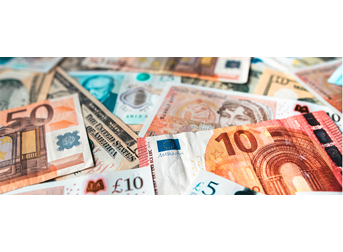Daily Brief

Tapering expectations widen
3 minute readCalm in Canada
For a second day, the Japanese yen shared last place with a commodity-related currency. This time it was the Australian dollar. Also for a second day sterling was unchanged on average against the majors. The economic data were uninspiring and there were no central banker comments to stir things up.
That is not to say there were no central banker comments. Bank of Canada Governor, Tiff Macklem, made a Zoom appearance at the House of Commons Standing Committee on Finance to talk about the BoC’s Monetary Policy Report. In his opening statement he confirmed that the policy interest rate would not rise “until economic slack is absorbed so that the 2% inflation target is sustainably achieved”, perhaps in the second half of next year. On quantitative easing; “further adjustments to the pace of net purchases will be guided by our ongoing assessment of the strength and durability of the economic recovery”.
The governor’s words were uncontroversial and unsurprising. They did not affect the CAD, which is flat on the day against the USD, EUR, CHF, SEK and GBP, and on average. There were no Canadian economic data to affect it.
Houses up, confidence up
Data from the United States told investors what they pretty much already knew. The numbers were all strong but investors saw them as unlikely to affect the decision of the Federal Open Market Committee today. The US dollar showed no reaction.
Taken in order: the FHFA house price index rose 0.9% in February and was 12.2% higher on the year; S&P’s house price index was closely aligned with the FHFA, showing an annual increase of 12%: the Richmond Fed’s manufacturing index was unchanged on the month at 17, towards the top of its ten-year range; the Conference Board’s consumer confidence index rose sharply again in April, up by almost 13 points at 121.7.
There was nothing whatsoever to quibble about with the US data yet, good as they were, they were not enough to lift the dollar. Nor did falling retail prices in Britain or stronger retail sales in Japan have any influence on the pound or the yen.
C and other factors
The Australian consumer price data released overnight did affect the Aussie, briefly knocking a third of a cent off its US dollar value. It is the day’s weakest performer, down by almost a cent against sterling and an average of 0.5% lower against the major currencies.
Analysts had forecast a 0.9% quarterly rise for prices in Q1, which would have put headline inflation at 1.4%. Instead, investors were presented with figures of 0.6% and 1.1%. The data put no upward pressure on interest rates, causing the AUD to lose ground. The same could be said of the GfK consumer confidence index in Germany, where “rising infection rates and the need to tighten the lockdown restrictions are weighing on the consumer climate”.
Ecostats later today range from Swedish retail sales, through America’s trade deficit to Canadian retail sales. The main event, even though it’s unlikely to deliver any great revelations, is the Federal Open Market Committee’s policy statement, and the chairman’s subsequent press conference at 1930 this evening. Jerome Powell will probably not want to make any commitment to the tapering of QE, or to when it might begin. That is not to say he won’t.
Weekly roundup



